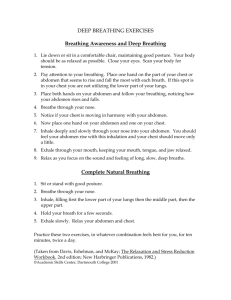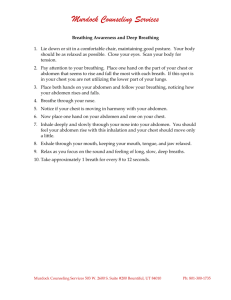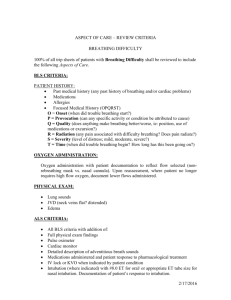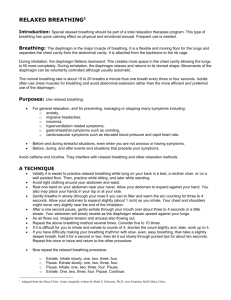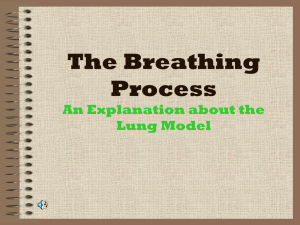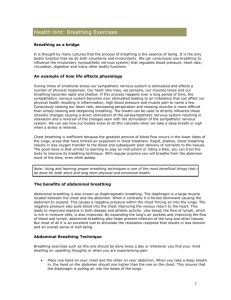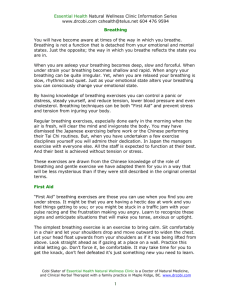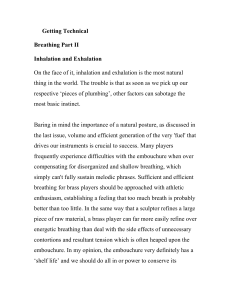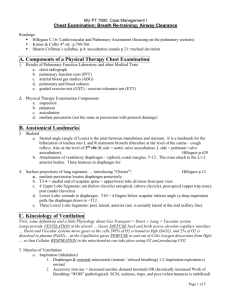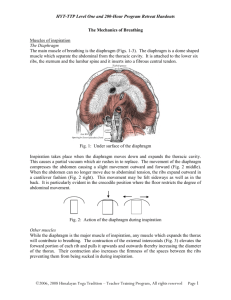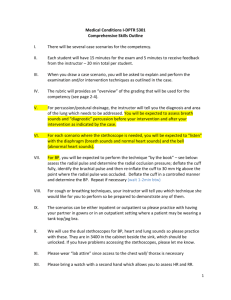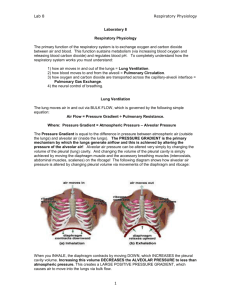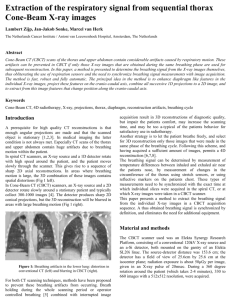Breathing - Sports Therapy Center
advertisement
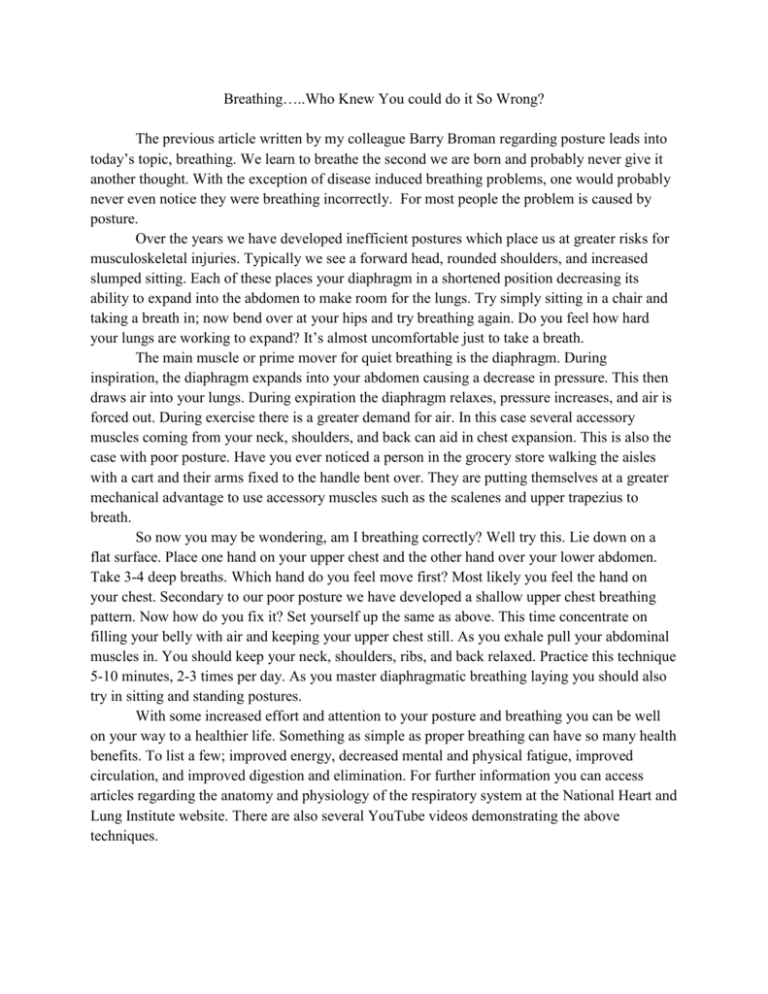
Breathing…..Who Knew You could do it So Wrong? The previous article written by my colleague Barry Broman regarding posture leads into today’s topic, breathing. We learn to breathe the second we are born and probably never give it another thought. With the exception of disease induced breathing problems, one would probably never even notice they were breathing incorrectly. For most people the problem is caused by posture. Over the years we have developed inefficient postures which place us at greater risks for musculoskeletal injuries. Typically we see a forward head, rounded shoulders, and increased slumped sitting. Each of these places your diaphragm in a shortened position decreasing its ability to expand into the abdomen to make room for the lungs. Try simply sitting in a chair and taking a breath in; now bend over at your hips and try breathing again. Do you feel how hard your lungs are working to expand? It’s almost uncomfortable just to take a breath. The main muscle or prime mover for quiet breathing is the diaphragm. During inspiration, the diaphragm expands into your abdomen causing a decrease in pressure. This then draws air into your lungs. During expiration the diaphragm relaxes, pressure increases, and air is forced out. During exercise there is a greater demand for air. In this case several accessory muscles coming from your neck, shoulders, and back can aid in chest expansion. This is also the case with poor posture. Have you ever noticed a person in the grocery store walking the aisles with a cart and their arms fixed to the handle bent over. They are putting themselves at a greater mechanical advantage to use accessory muscles such as the scalenes and upper trapezius to breath. So now you may be wondering, am I breathing correctly? Well try this. Lie down on a flat surface. Place one hand on your upper chest and the other hand over your lower abdomen. Take 3-4 deep breaths. Which hand do you feel move first? Most likely you feel the hand on your chest. Secondary to our poor posture we have developed a shallow upper chest breathing pattern. Now how do you fix it? Set yourself up the same as above. This time concentrate on filling your belly with air and keeping your upper chest still. As you exhale pull your abdominal muscles in. You should keep your neck, shoulders, ribs, and back relaxed. Practice this technique 5-10 minutes, 2-3 times per day. As you master diaphragmatic breathing laying you should also try in sitting and standing postures. With some increased effort and attention to your posture and breathing you can be well on your way to a healthier life. Something as simple as proper breathing can have so many health benefits. To list a few; improved energy, decreased mental and physical fatigue, improved circulation, and improved digestion and elimination. For further information you can access articles regarding the anatomy and physiology of the respiratory system at the National Heart and Lung Institute website. There are also several YouTube videos demonstrating the above techniques. Danielle Rodriguez is a private practice licensed physical therapist in Sugar Land. She may be reached at Sports Therapy Center, 281-980-2997; or online at www.sportstherapycenter.com .


